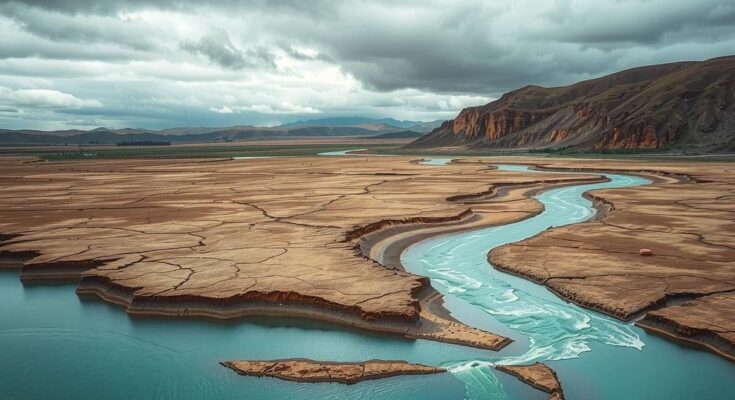Climate change is disrupting the water cycle, causing severe weather events such as flash floods and droughts worldwide. Increased temperatures allow the atmosphere to hold more moisture, leading to heavier rainfall and intensified drought conditions. This imbalance is exacerbated by human activities and natural phenomena, highlighting the need for effective climate monitoring and management strategies.
Climate change is significantly disrupting the Earth’s water cycle, leading to catastrophic events such as flash floods in various regions, including Argentina, South Sudan, and Saudi Arabia. Although multiple factors contribute to these disasters, experts emphasize that climate change plays a pivotal role. Hylke Beck, an assistant professor at King Abdullah University, highlights that temperature is a critical component of the water cycle, influencing its movement and dynamics.
The water cycle entails the continuous transition of water among the ocean, land, and atmosphere, where evaporation, condensation, and precipitation occur. Beck explains that warmer air can retain more moisture; specifically, for every degree of warming, the atmosphere holds about seven percent more water. This increase results in larger water supplies for storms, causing heavier rainfall during suitable conditions.
Significantly, Saudi Arabia’s climate has warmed by 2.1 degrees Celsius from 1979 to 2019, nearly three times the global average, according to the Journal of Applied Meteorology and Climatology. Consequently, higher temperatures not only lead to increased rainfall but also enhance evaporation rates, exacerbating drought conditions due to the rapid loss of moisture from the soil. This phenomenon creates longer dry spells, resulting in less frequent yet more intense rainfall, adversely affecting agricultural viability and potentially leading to desertification.
In Saudi Arabia, heightened winds and drier soil contribute to more severe sandstorms, negatively impacting agriculture and air quality. Beck notes that rising evaporation can lead to increased rainfall, but this does not always benefit regions in need. The variation in moisture distribution due to climate change can intensify both drought and extreme rainfall.
Human activities are also implicated in altering land use patterns, such as deforestation, urbanization, and dam constructions, which modify natural water flows. Natural climate phenomena like El Nino and La Nina further complicate this scenario by shifting weather patterns worldwide, causing uneven rainfall and drought conditions. Beck summarizes, “Climate change is essentially throwing the whole system out of balance,” leading to heightened weather extremes.
Beck underscores the importance of organizations like World Weather Attribution in understanding and monitoring climate change’s effects on extreme weather events and the overall water cycle, emphasizing the urgency for addressing these issues on both global and local fronts.
In summary, climate change is fundamentally altering the Earth’s water cycle, leading to increased instances of extreme weather such as intense rainfall and drought. The interplay between rising temperatures and moisture dynamics exacerbates existing environmental challenges. Human actions and natural phenomena further influence these changes, creating a complex system that requires careful monitoring and management. Addressing climate change is crucial to restoring balance within this system and mitigating its impacts on global populations.
Original Source: www.arabnews.com




